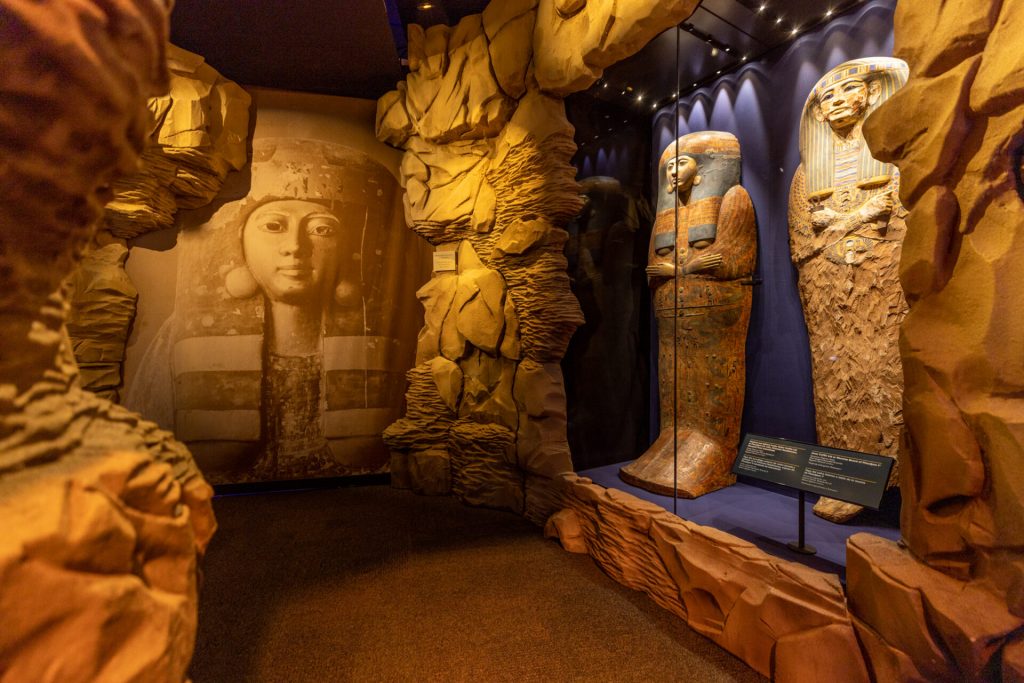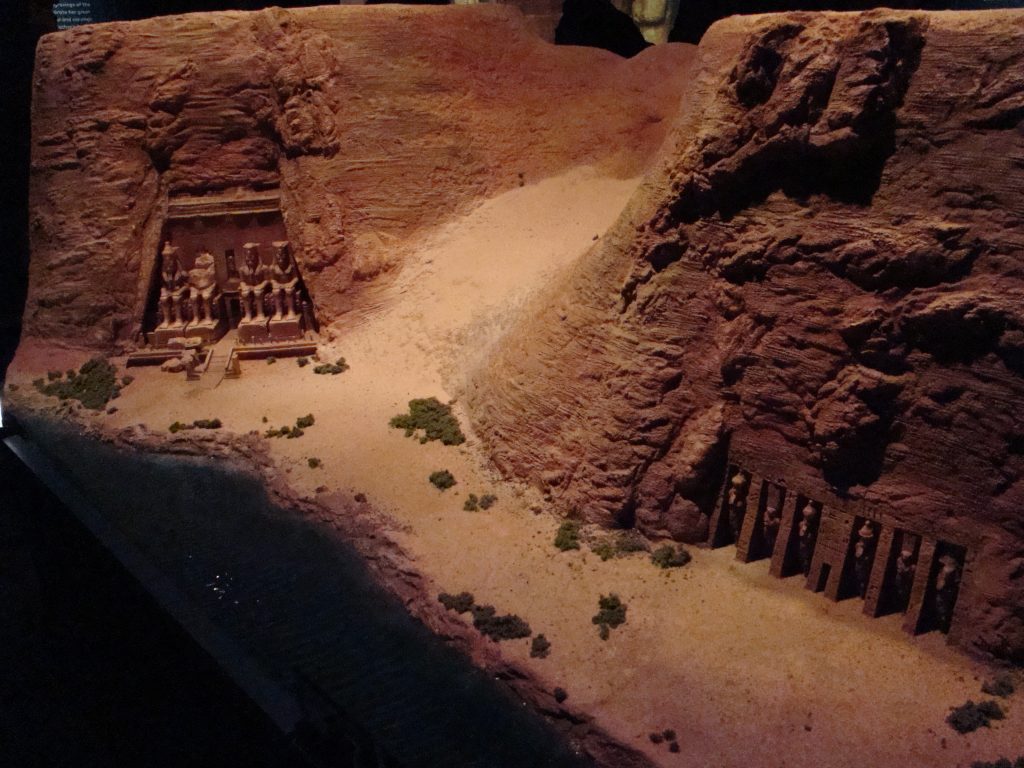Akhenaten: Artistic Development in the Amarna Period
Amenhotep IV, widely recognized as the notorious Akhenaten, was the enigmatic “heretic” pharaoh who ruled during the Eighteenth Dynasty.
Maya M. Tola 20 July 2023
After the United States, and before Australia, France has been, since April 7, the only European country to host a large-scale exhibition around the greatest of the Pharaohs, Ramesses II. The event takes place in Europe until September 6, 2023, to then amaze other visitors in Australia. Whether you are curious to visit it or not, DailyArt takes this opportunity to introduce you to the incredible reign of one of the greatest kings of ancient Egypt, Ramesses II (whose reign took place from 1279 to 1213 BC).

Ramses the Great and the Gold of the Pharaohs Exhibition, April 2023. Expo Ramses.
Revealing to the public more than 180 original pieces (statues, jewelry, animal mummies, etc.) – some of which have never left the Egyptian borders – the exhibition Ramses the Great and the Gold of the Pharaohs is currently being held at the Grande Halle de la Villette, in Paris, under the leadership of the American company World Heritage Exhibitions.
The staging of this event is sensational. Indeed, the sumptuous decorations and the sound environment have been specially designed to immerse the visitor in the particular atmosphere of the Egypt of Ramses (also spelled Ramesses) and to best contextualize the many ancient pieces. Various screens showing documentaries and 3D reconstructions of Ramesside events and monuments punctuate the visit in order to impress and transport audiences in time.

Ramses the Great and the Gold of the Pharaohs Exhibition, April 2023. Photo by the author.
The highlight of the show, patiently awaiting the visitor at the end of his journey – the painted wood coffin of Ramses II is the major piece of the exhibition. It is indeed an exceptional loan granted by Egypt to France following the care provided in the 1970s by French scientists to the mummy of the great Pharaoh. In 1976, when he was affected by a colony of fungi, the remains had indeed taken the plane (decidedly, nothing is impossible for Ramses the Great!) in order to be treated. Moving his coffin is thus a real diplomatic gift, testifying to unprecedented cooperation between France and Egypt.

The Coffin of Ramses II (detail), painted cedar wood, New Kingdom, Dynasty 19, Egyptian Museum, Cairo, Egypt. Photo by the author.
Ramses II is definitely the King of all superlatives: holder of the longest reign in the history of Egypt of the Pharaohs (67 years of reign!), father of more than one hundred and ten children, the effigy of many colossi… This exhibition is an opportunity for the visitor to retrace the main stages of the incredible life of Ramses II.
As a tireless warrior, he is the initiator of the first great peace treaty in history, the Egyptian-Hittite treaty of the year 21 – which means that it was signed during the 21st year of the reign of Ramses II. Concluded with the Hittites, Indo-European people whose kingdom occupies the south of present-day Turkey, it follows the Battle of Kadesh. The latter is the most famous battle of Antiquity, told both in Egyptian and Egyptian archives, as well as on the walls of the temples of Karnak and the Ramesseum – the funerary temple dedicated to the soul of Ramses. This agreement thus favored a half-century of peace between the two enemy powers.

Ramses II Massacring his Enemies, painted limestone, New Kingdom, 19th Dynasty, Egyptian Museum, Cairo, Egypt. Photo by the author.
The enrichment of the country having been considerably favored by this period of peace, Ramses II is also a great builder. The pharaoh is indeed the sponsor of a new capital called Pi-Ramses (the equivalent of Versailles for Louis XIV), but also of many temples in the service of the gods and of his own worship, including the famous temples of Abu Simbel. The latter dug directly into the rock, are located in southern Egypt, marking the border of the Empire of Ramses. While the smaller temple is dedicated to Nefertari, his favorite wife, the Great Temple – whose facade is 33 meters high and 38 meters wide – is intended for the worship of Amun, Re, Ptah and Ramses II deified. Both evoked by models within the Parisian exhibition testify to the greatness of this Pharaoh.

Model Representing the Two Temples of Abu Simbel. Photo by the author.
In 2019, the same Grande Halle de la Villette hosted the exhibition “Tutankhamun, The Treasure of the Pharaoh”; it was then one of the most anticipated temporary exhibitions this year, and welcomed 1.42 million visitors, a historic record. Officially becoming the most visited exhibition in history in France, it nevertheless risks being dethroned by the phenomenal exhibition “Ramses and the Gold of the Pharaohs” which is already breaking records; thus, 145,000 tickets were sold before its doors even opened!
Deserted by tourists following the “Arab Spring” in 2011, Egypt is still struggling to regain a stable tourist flow. While the country is also marked by a wheat crisis and excessive inflation – economic consequences of the current war in Ukraine – the Egyptian authorities are betting on these bombastic exhibitions to make their heritage visible internationally and confirm its attractiveness to the public. Thus, Mostafa Waziry, the secretary-general of the Supreme Council of Antiquities of Egypt, declared during the opening of the Parisian exhibition:
All these objects tell the story of the magnificence of Ancient Egypt, the story of an Empire whose contributions to art, economy, politics, language and culture are unparalleled (…). Modern Egypt is proud to share its history.

Colossus Representing Ramses II, limestone, around 2m height, New Kingdom, 19th Dynasty, Egyptian Museum, Cairo, Egypt. Photo by the author.
Indeed, the incredible fascination that Ancient Egypt exerts on our contemporaries is felt through the visit to this Parisian exhibition. At the end of the course, I notice a father who asks his child: “So, would you like to go to Egypt?”. Thus, whether this spontaneous suggestion is followed by a real travel plan or not, it attests that the Egypt of the Pharaohs, of which Ramses is the greatest representative, has not finished fascinating both young and old people.

Ramses and the Gold of the Pharaohs Exhibition, April 2023. Expo Ramses.
DailyArt Magazine needs your support. Every contribution, however big or small, is very valuable for our future. Thanks to it, we will be able to sustain and grow the Magazine. Thank you for your help!